A borescope is an optical tool used to view areas that would otherwise not be visible. A borescope is inserted into the item being evaluated without destroying the item of interest.
Components
A Borescope can consist of
- Rigid or flexible working length
- Light Source to illuminate the target under inspection.
- Optical system that may consist of a relay lens system, rod lens system, fiber optic image guide a CCD or CMOS camera.
- Eyepiece or Monitor to view the image
Applications
Borescopes are used to non destructively inspect industrial systems and equipment for condition, manufactured parts for quality and security and law enforcement for contraband, intelligence and safety.
Common Inspections Include internal viewing of:
- Turbine Engines
- Internal Combustion Engines
- Pipes
- Heat exchanger tubes
- Gear boxes
- Welds
- Foreign Object Retrieval
- Cast Parts
- Manufactured or machined parts
Technology
Videoscope:
A videoscope or video borescope typically utilizes a CCD or CMOS camera sensor, located at the tip of the borescope, to produce an image that is relayed to an external viewing device such as an LCD monitor.
Fiberscope:
A fiberscope utilizes a fiber optic image guide to transmit an image from the objective lens to a relay lens. The image can be viewed through an eyepiece or connected to an adapter and attached to a CCD camera for viewing real time video.
Rigid Borescope:
A rigid borescope utilizes a lens system to relay the image from the objective to a relay lens. The image can then be viewed through an eyepiece or connected to an adapter and attached to a CCD camera for viewing real time video.
Recent Developments
Video
CCD cameras made it possible to manufacture high resolution videoscopes or video borescopes. The CCD provided a better overall borescope inspection that fiberscopes or flexible borescopes. Videoscopes are now used for most borescope inspections, except in application that have very limited access and require a small diameter fiberscope.
Measurement
Video borescopes have been configured with the ability to measure small defects in recent years. This has allowed borescope inspections to be quantified. This has been crucial in the inspection of aircraft turbines where a turbine can be kept in service longer than in could in years past.
CMOS
Complimentary Metal Oxide Semiconductors (CMOS) have quickly become an affordable component of video borescopes and have allowed very affordable systems to be made available for only a few hundred dollars. A video borescope with a CMOS sensors does not yet have the image resolution of a borescope with a CCD, however, the gap is closing quickly.




